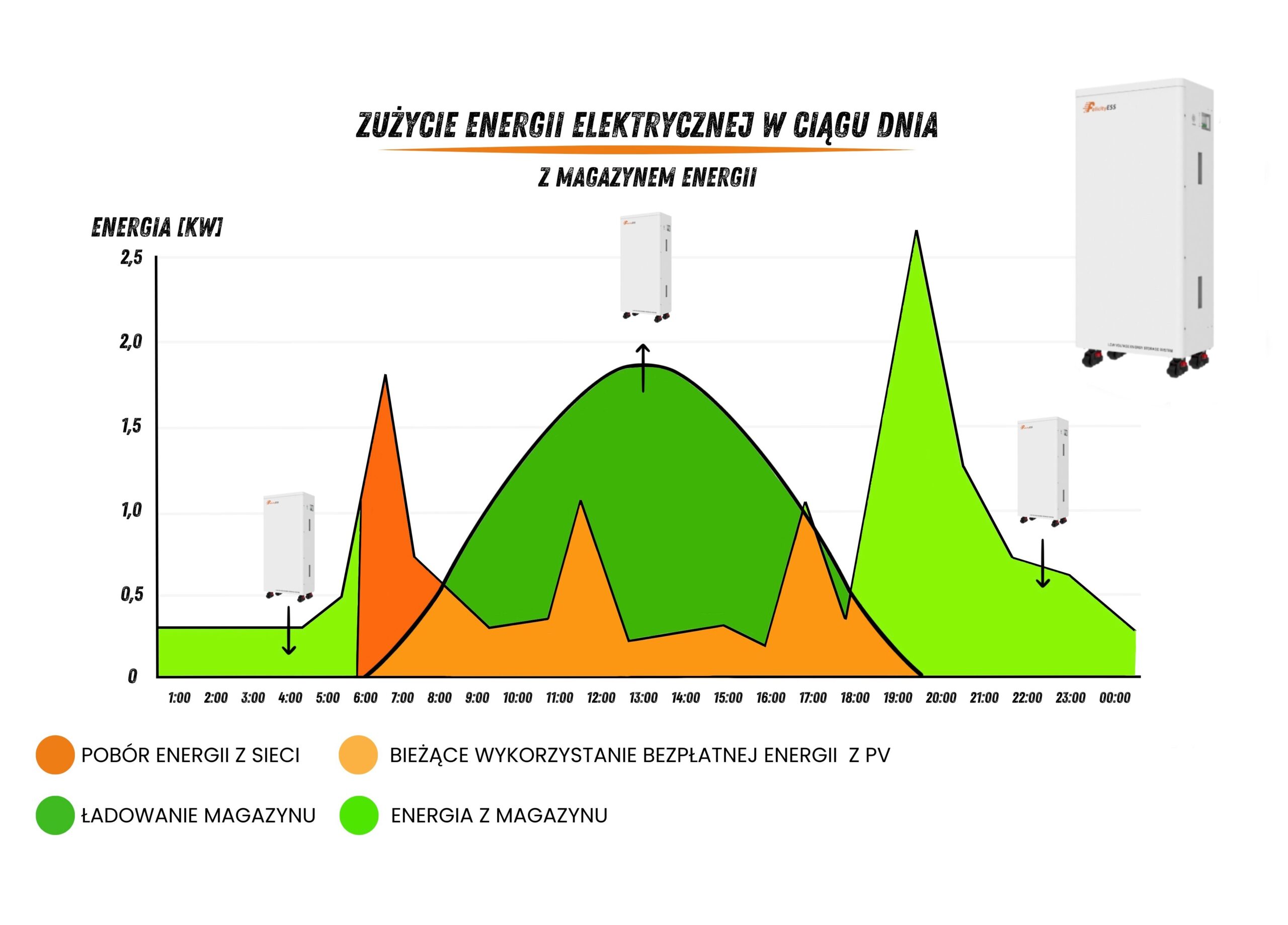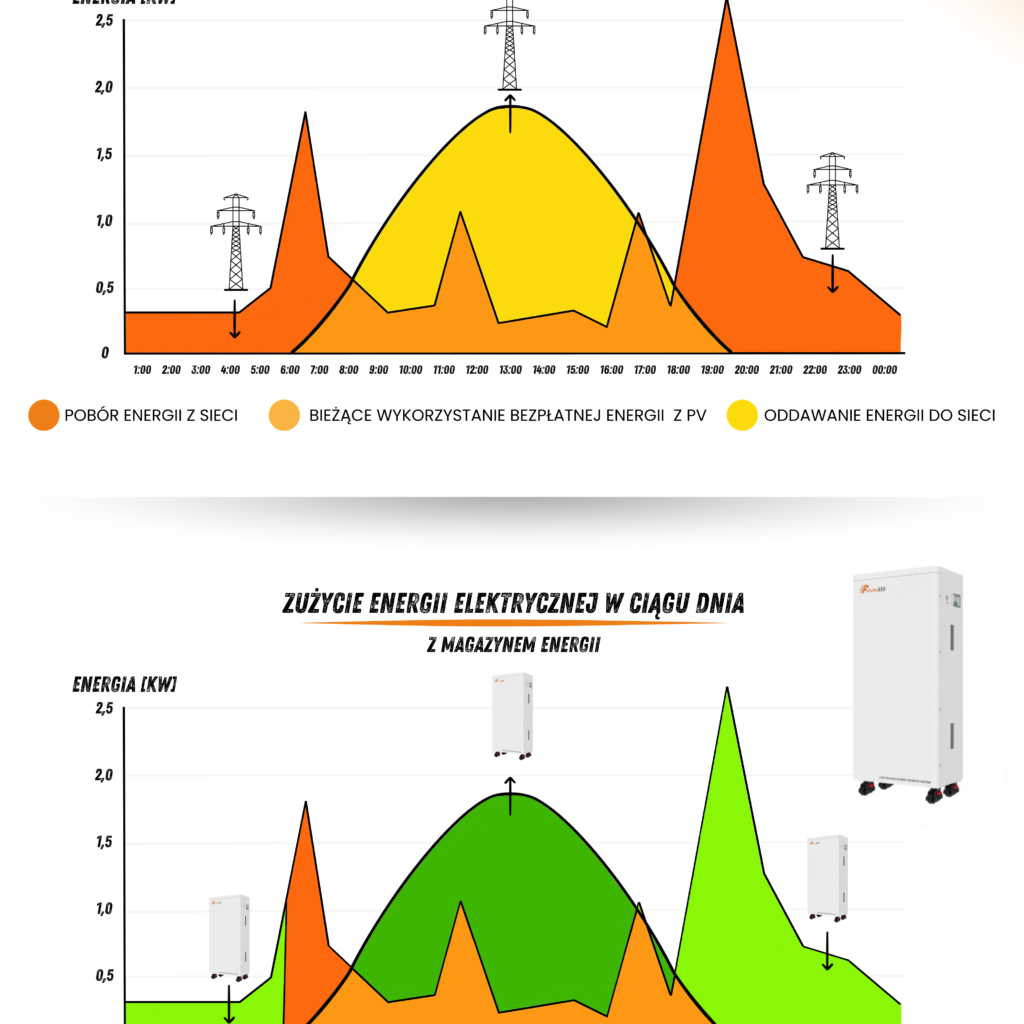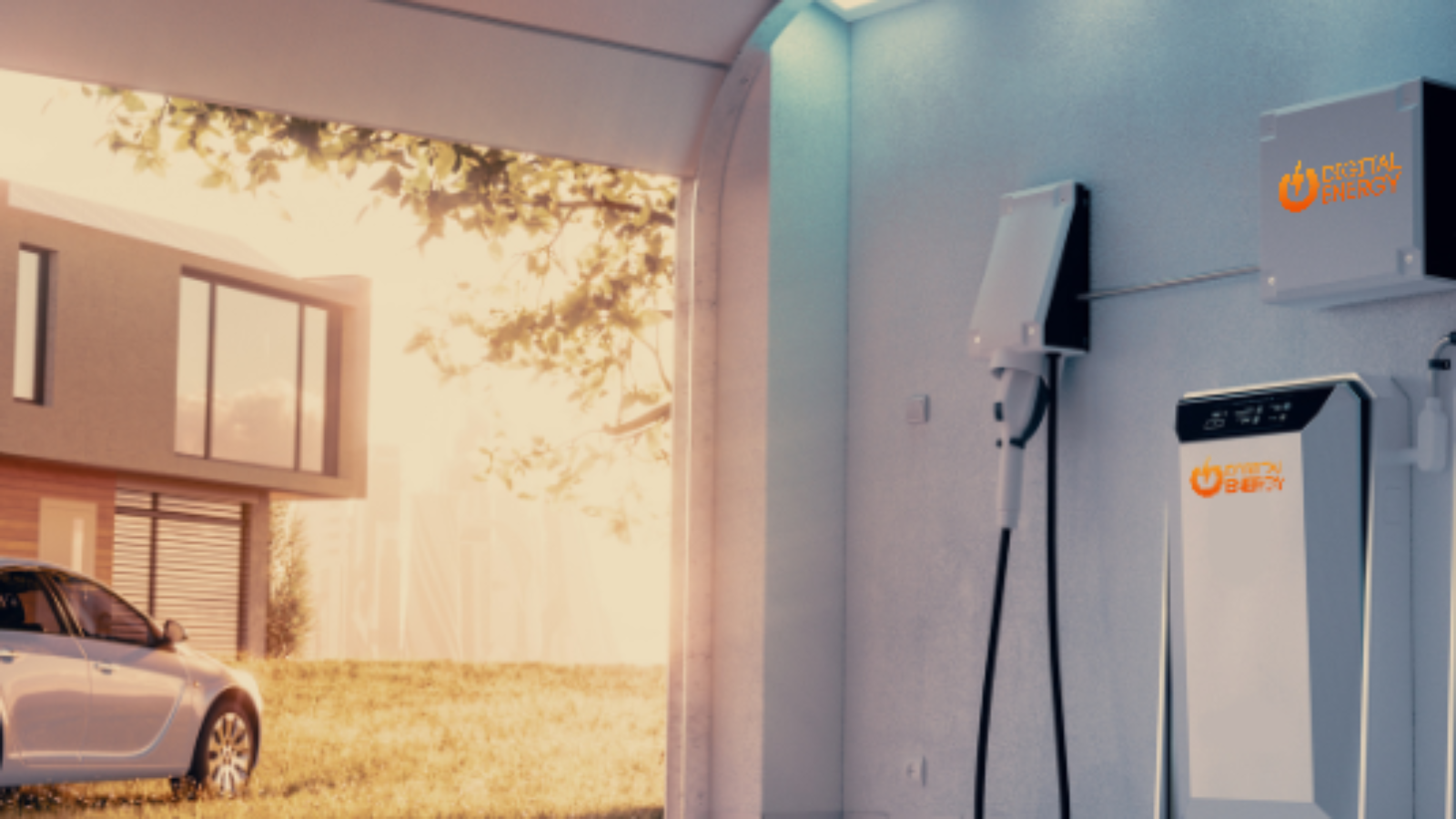In the context of rapidly rising energy prices and the growing need to increase energy independence, photovoltaic installations are becoming one of the key elements of modern households and businesses. However, in order to fully use the potential of this technology, it is necessary to use energy storage , which allow for the optimization of the energy balance. Based on two graphs showing the energy consumption in a household with and without energy storage, we will present the key differences in the functioning of these systems.
1. Photovoltaic installation without energy storage

In case of installation without energy storage , the PV system works only during the hours of sunlight, when energy production is the highest. In such a system, the following phenomena can be seen
- Current energy consumption during the day (yellow) is fully covered by the production from photovoltaic panels. In practice, this means that during the afternoon hours the household uses almost exclusively free solar energy.
- Surplus production energy at peak times (around noon) is fed back into the grid (yellow line). While the Polish prosumer settlement system allows for some recovery of this energy, it is usually done in the form of balancing, which means that we receive the supplied energy at lower rates or with fees, which reduces the profitability of this solution.
- In the evening and at night , when energy demand increases (especially between 6:00 and 10:00 p.m.), the PV installation no longer produces energy and the household is forced to draw energy from the grid (orange area). This increases operating costs and reduces the efficiency of the photovoltaic investment, because we use energy from external suppliers, often at times of higher rates.
2. Photovoltaic installation with energy storage

Inclusion energy storage to the PV system significantly improves its efficiency and increases the level of self-consumption. In such a solution, the following key changes occur:
- Current energy production During the day it still covers the energy needs of the farm, but the surplus production is not fed into the grid but loaded into energy storage (green area on the graph). In this way, the excess energy produced is stored and can be used efficiently later.
- In the evening and at night , when the demand for energy increases, the household uses the energy stored in the storage (light green area), instead of drawing it from the grid. This solution minimizes the costs associated with purchasing energy from suppliers, increases self-consumption and improves the economic balance of the entire installation.
- Energy storage it also enables greater flexibility in managing energy production and consumption. In the context of increasingly frequent changes in energy tariffs, storage facilities allow avoiding the collection of electricity during peak periods, when prices are the highest, which additionally improves the profitability of the entire system.
3. Benefits of using an energy storage
Photovoltaics combined with energy storage becomes a more efficient and independent system from the user’s perspective. Below are the key advantages resulting from the integration of these two technologies:
- Increased self-consumption : In the case of a PV installation without a storage, the average self-consumption is around 20–30%. With an energy storage, this indicator can be increased to 70–90%, which directly translates into savings.
- Limiting energy output to the grid : Sending surpluses to the grid is not very profitable from a financial point of view. The storage allows for full use of the produced energy within one’s own needs.
- Independence from the energy grid : Energy storage enables minimizing energy purchases from the grid, which not only reduces costs but also increases resilience to energy price fluctuations and potential failures.
- Protection against rising energy prices : Rising energy costs are one of the main challenges facing modern power systems. Energy storage, combined with photovoltaics, gives users greater control over energy consumption and costs.
- Economic efficiency : Although investing in an energy storage facility requires an initial financial outlay, the benefits resulting from reduced energy purchase costs and increased self-consumption mean that systems with storage facilities pay off much faster than those based solely on photovoltaics.
4. Is energy storage the future of efficient PV systems?
The introduction of energy storage to photovoltaic installations is a step towards modern, efficient and sustainable energy. They enable the full use of the potential of renewable energy sources and increase the energy independence of users. In an era of variable energy tariffs, rising electricity prices and the need to increase energy security, investing in an energy storage becomes not only beneficial, but also necessary.
Summary:

Integrating photovoltaics with energy storage is the most effective solution for modern households and companies that want to optimize energy consumption, reduce costs and gain greater independence from energy suppliers. With the development of energy storage technologies, these systems are becoming more affordable and cost-effective, making them an indispensable element of future energy solutions.
Devices on the basis of which the chart visualization was created:

 Cart is empty
Cart is empty 